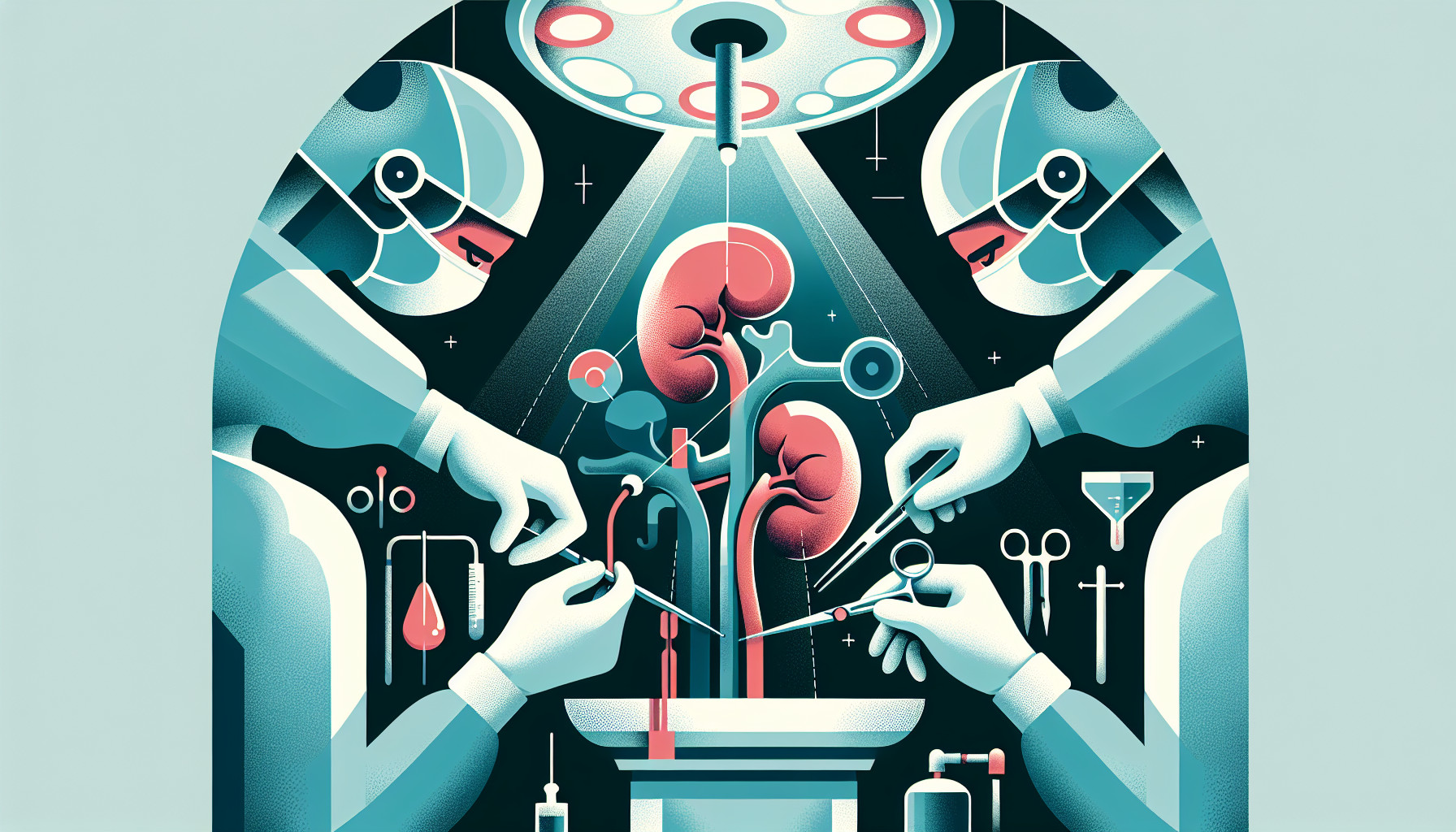Our Summary
This research paper is about the training process for a type of surgery called laparoscopic donor nephrectomy (LDN), which is a method used to remove a kidney from a live donor for transplantation. The study found that the guidance for learning this procedure is not very clear. The researchers looked at various sources, including academic papers and online databases, to understand more about the training process for this surgery.
The researchers included 44 studies that focused specifically on the transition from traditional kidney removal methods to LDN. Most of the information came from academic hospitals, and about a third of the hospitals performed less than 25 kidney donor surgeries each year. Usually, the person learning the procedure was an already practicing surgeon, often with prior experience in similar procedures.
Interestingly, the study found that it takes an average of 35 surgeries for a surgeon to become proficient in LDN, as measured by a decrease in the time it takes to perform the surgery. The study also found that hospitals performing more than 50 of these procedures a year tended to have better patient outcomes.
However, the rules from the United Network of Organ Sharing, the organization that oversees organ transplantation in the U.S., state that a surgeon only needs to have performed or assisted in 15 cases to be considered a primary surgeon for LDN. This is less than the average “learning curve” identified in this study.
The authors conclude that there is a need for better, more objective ways to measure a surgeon’s readiness to perform this procedure. This could help ensure a high standard of care for patients undergoing this surgery.
FAQs
- What is the average learning curve for achieving competency in laparoscopic donor nephrectomy (LDN)?
- What is the requirement of the United Network of Organ Sharing for certification as the primary LDN surgeon?
- How can objective learner-based metrics improve training and competency for LDN?
Doctor’s Tip
A helpful tip a doctor might tell a patient about laparoscopic nephrectomy is to follow post-operative care instructions closely, including taking prescribed medications, avoiding heavy lifting, and attending follow-up appointments for monitoring and recovery. It is also important to stay hydrated and eat a healthy diet to support healing and recovery after surgery.
Suitable For
Patients who are typically recommended for laparoscopic nephrectomy include those in need of a kidney transplant, particularly living donors. The study mentioned in the abstract focused on laparoscopic donor nephrectomy, which is a minimally invasive procedure for removing a kidney from a living donor for transplantation. Surgeons who perform laparoscopic nephrectomy are usually urologists with experience in laparoscopic or open nephrectomy procedures. The learning curve for achieving competency in laparoscopic nephrectomy is estimated to be around 35 cases, with improved outcomes observed in centers performing a higher volume of these procedures annually. Training and competency assessment for laparoscopic nephrectomy are important for ensuring quality standards in patient care.
Timeline
Pre-op: Patient undergoes pre-operative evaluation and workup, including imaging studies and blood tests. Patient meets with surgeon to discuss procedure and potential risks and benefits.
Day of surgery: Patient arrives at hospital and undergoes laparoscopic nephrectomy procedure under general anesthesia. Procedure typically lasts 2-3 hours.
Post-op: Patient is monitored in recovery room before being transferred to a hospital room. Patient may experience pain and discomfort, and will be given pain medication as needed.
1-2 days post-op: Patient is encouraged to get up and walk around to promote healing and prevent blood clots. Patient may be discharged from hospital if recovery is going well.
1-2 weeks post-op: Patient follows up with surgeon for post-operative visit to ensure healing is progressing as expected. Patient may gradually return to normal activities as tolerated.
6-12 weeks post-op: Patient may have follow-up imaging studies to ensure remaining kidney is functioning properly. Patient continues to follow up with surgeon as needed for long-term monitoring.
What to Ask Your Doctor
- How many laparoscopic nephrectomies have you performed?
- What is your success rate with this procedure?
- What are the potential risks and complications associated with laparoscopic nephrectomy?
- How long is the recovery period after laparoscopic nephrectomy?
- Are there any alternative treatment options to consider?
- What is the expected outcome for the remaining kidney after nephrectomy?
- Will I need any additional tests or evaluations before the surgery?
- How long will the surgery take and what is the typical hospital stay?
- What kind of pain management options will be available after the procedure?
- What follow-up care will be needed after laparoscopic nephrectomy?
Reference
Authors: Raque J, Billeter AT, Lucich E, Marvin MM, Sutton E. Journal: Clin Transplant. 2015 Oct;29(10):893-903. doi: 10.1111/ctr.12592. Epub 2015 Aug 26. PMID: 26179472
